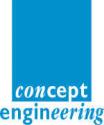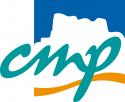W02 Emerging Memory Solutions - Technology, Manufacturing, Architectures, Design and Test
Agenda
| Time | Label | Session |
|---|---|---|
| 08:30 | W02.1 | Opening and 1st Keynote Chair: |
| 08:30 | W02.1.1 | Welcome Addresss Christian Weis, University of Kaiserslautern, DE |
| 08:35 | W02.1.2 | Keynote: "Tomorrow's Memory Systems" Bruce Jacob, University of Maryland, US In the future new memory systems and technologies will appear, but what are the implications on the programming models in a few years from now. Prof. Bruce Jacob: Bruce Jacob is a Keystone Professor of Electrical and Computer Engineering and former Director of Computer Engineering at the University of Maryland in College Park. He received the AB degree in mathematics from Harvard University in 1988 and the MS and PhD degrees in CSE from the University of Michigan in Ann Arbor in 1995 and 1997, respectively. He holds several patents in the design of circuits for electric guitars and started a company around them. He also worked for two successful startup companies in the Boston area: Boston Technology and Priority Call Management. At Priority Call Management he was the initial system architect and chief engineer. He is a recipient of a US National Science Foundation CAREER award for his work on DRAM, and he is the lead author of an absurdly large book on the topic of memory systems. His research interests include system architectures, memory systems, operating systems, and electric guitars. |
| 09:15 | W02.2 | Special Session on Emerging Memory Applications Chair: |
| 09:15 | W02.2.1 | Narrower-purpose Computing for Efficient Near-Memory Processing Stephan Diestelhorst, ARM, GB |
| 09:40 | W02.2.2 | Scalable Deep-Learning with Smart Memory Cubes Erfan Azarkhish, DEIS, University of Bologna, Bologna, IT |
| 10:00 | W02.3 | Coffee Break and Poster Session I See for the Poster List below. |
| 10:30 | W02.4 | Invited Talk and Panel Moderator: |
| Panelists: Speaker: Paul Franzon, NC State University, US Abstract There has been strong recent interest in machine learning algorithms that are capable of unsupervised learning and incremental learning. A subset of these algorithms are cortically inspired, that is inspired by presumptive models of how the brain works at higher levels, i.e. at the cortical levels. Examples of such algorithms include Sparsey, Hierarchical Temporal Memory, LSTM and Cogent Confabulation. We have been designing and building accelerators for these algorithms. We will review these algorithms in some detail. Two versions were designed - a programmable 65 nm SIMD version with Processor in Memory (PiM) extensions and a 65 nm ASIC version. They were compared against a 28 nm GPU baseline using the KTH video action recognition benchmark. Performance/power improvement over the GPU were (Sparsey) SIMD with PiM: 1490; ASIC: 1300; and (HTM) SIMD with PiM: 537; ASIC: 47,100. Part of the SIMD design is being fabricated as a 3DIC. Memory bandwidth and capacity is a key bottleneck in many of these algorithms. Codesigned 3D solutions provide specific advantages. Short Bio: Paul D. Franzon is currently the Cirrus Logic Distinguished Professor of Electrical and Computer Engineering at North Carolina State University. He earned his Ph.D. from the University of Adelaide, Adelaide, Australia in 1988. He has also worked at AT&T Bell Laboratories, DSTO Australia, Australia Telecom and three companies he cofounded, Communica, LightSpin Technologies and Polymer Braille Inc. His current interests center on the technology and design of complex microsystems incorporating VLSI, MEMS, advanced packaging and nano-electronics. He has lead several major efforts and published over 200 papers in these areas. Panelists:Francky Catthoor1, Ahmed Hemani2, Jean-Francois Roy3, Elisa Vianello4 and Said Hamdioui5 1IMEC, BE; 2Royal Institute of Technology, SE; 3UPMEM, FR; 4CEA-Leti, FR; 5Delft University of Technology, NL In current conventional computing systems the data is usual transported with a tremendous effort and energy to the computing cores. This has a lot of drawbacks. Thus, near-memory or in-memory computing has evolved as new emerging trend. We will have a spotlight on the advantages and disadvantages of this novel research area. | ||
| 12:00 | W02.5 | Lunch Break |
| 13:00 | W02.6 | 2nd Keynote and Special Session II Chair: |
| 13:00 | W02.6.1 | Keynote: Energy-Efficient Processing and Why the Memory Matters Borivoje Nikolic, UC Berkeley, US Abstract: New computing applications demand increased system capability, but the end of Moore's Law scaling also means the end of traditional approaches based on scaling conventional general-purpose computing architectures. New architectures and accompanying circuit implementations are required to develop efficient specialized chips for different markets. To provide for ultimate energy efficiency in a broad scope of applications ranging from future mobile clients to warehouse-scale computers (WSCs), the new architectures will optimally utilize a computing substrate based on ultimately scaled CMOS and some of the key emerging device, interconnect and memory technologies. While workloads are constantly changing, the underlying computational primitives are not. The 13 Berkeley computational motifs as the key computational kernels across a wide range of current and emerging applications. By optimally implementing specialized engines for these motifs, including both computation and data movement, optimal energy efficiency can be achieved over a broad range of application domains and underlying technologies. This talk presents approaches to implementing specialized computing platforms and presents the role of traditional and emerging memory technologies in them. Bio: Borivoje Nikolić is the National Semiconductor Distinguished Professor of Engineering at the University of California, Berkeley. He received the Dipl.Ing. and M.Sc. degrees in electrical engineering from the University of Belgrade, Serbia, in 1992 and 1994, respectively, and the Ph.D. degree from the University of California at Davis in 1999. His research activities include digital, analog and RF integrated circuit design and communications and signal processing systems. He is co-author of the book Digital Integrated Circuits: A Design Perspective, 2nd ed, Prentice-Hall, 2003. |
| 13:30 | W02.6.2 | Pushing the limits: challenges of low-voltage operation in ULL High Density (HD) SRAM Lorenzo Ciampolini, STMicroelectronics, FR |
| 13:50 | W02.6.3 | Evaluation of ternary computing approaches with NVM technologies Dietmar Fey, FAU, DE |
| 14:10 | W02.6.4 | Resistive RAM-Centric Computing: Design and Modeling Methodology Haitong Li, Stanford University, US |
| 14:30 | W02.7 | Coffee Break and Poster Session II See for the Poster List below. |
| 15:00 | W02.8 | Special Session on Emerging RRAMs and MRAMs Chair: |
| 15:00 | W02.8.1 | SOT-MRAM : an energy efficient cache memory alternative Marc Drouard, Antaios, FR |
| 15:20 | W02.8.2 | Majority-based Synthesis for RRAM-based in-memory computing Pierre-Emmanuel Gaillardon, University of Utah, US |
| 15:40 | W02.8.3 | An overview of Normally-off MCU based on hybrid NVM/CMOS circuits Jean-Michel Portal, IM2NP, FR |
| 16:00 | W02.9 | Open Call Paper Session Chair: |
| 16:00 | W02.9.1 | Ultra-Low Power and Compact TFET Multibit Latch and its Applications for Low Voltage Applications Navneet Gupta, CEA-Leti, FR |
| 16:20 | W02.9.2 | MAGPIE: System-level Evaluation of Manycore Systems with Emerging Memory Technologies Bruguier Florent, University of Montpellier, FR |
| 16:49 | W02.10 | Poster List: |
| 16:49 | W02.10.1 | A Non-Volatile Flip-Flop Using Memristive Voltage Divider Mehrdad Biglari, FAU, DE |
| 16:49 | W02.10.2 | In-Memory Computation of Transitive Closure Alvaro Velasquez, University of Central Florida, US |
| 16:49 | W02.10.3 | A Scalable Near-Data Processing Simulator Geraldo Francisco de Oliveira Junior, Universidade Federal do Rio Grande do Sul, BR |
| 16:49 | W02.10.4 | Disruptive 3D Technology: Recent Advances on COOLCUBE(TM) Mélanie Brocard, CEA-Leti, FR |
| 16:49 | W02.10.5 | 300 MM & 200 MM ADVANCED MEMORY PLATFORM AND MPW SHUTTLE AT LETI Elisa Vianello, CEA-Leti, FR |
| 16:49 | W02.10.6 | 4T SRAM Bitcell in 3D CoolCube Technology Exploiting Dynamic Back Biasing Réda Boumchedda, CEA-Leti, FR |
| 16:50 | W02.11 | Closing |
| 16:50 | W02.11.1 | Remarks Christian Weis1 and Bastien Giraud2 1University of Kaiserslautern, DE; 2CEA-Leti, FR |





